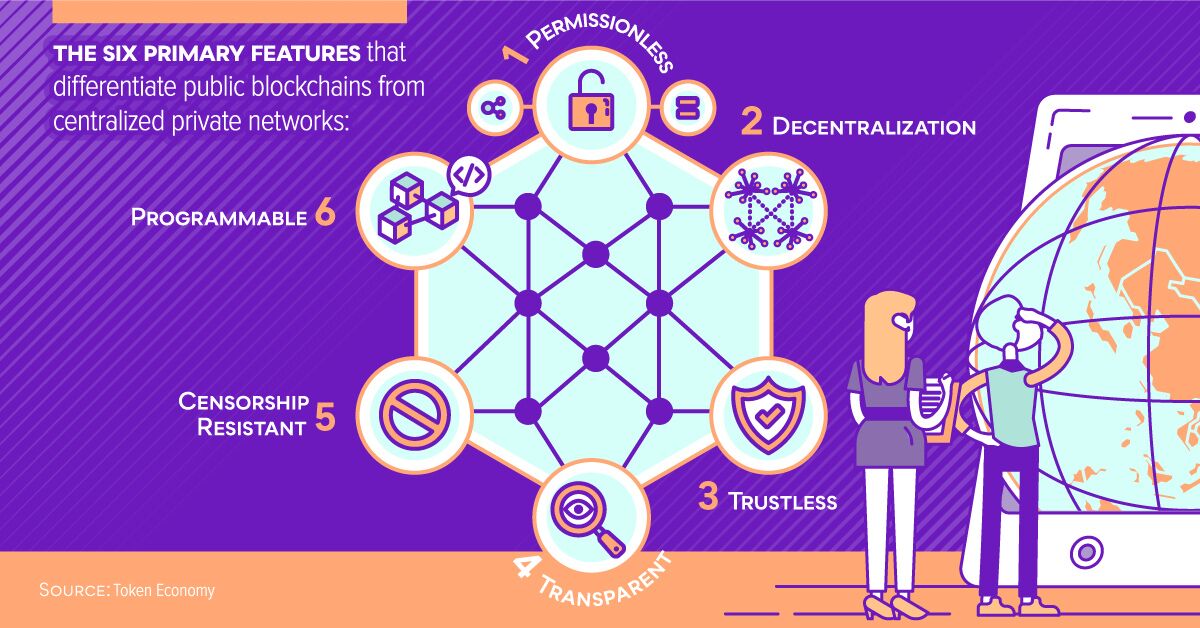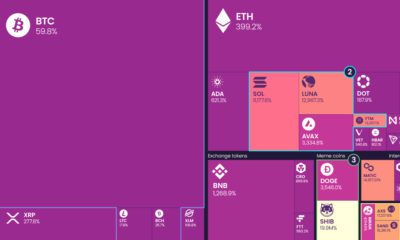Technology
Decentralized Finance: An Emerging Alternative to the Global Financial System
.container {
max-width: 1200px;
}
.button {
display: inline-block;
height: 45px;
color: #ffffff;
text-align: center;
font-family: helvetica;
letter-spacing: .01rem;
text-decoration: none;
white-space: nowrap;
border-radius: 0px;
line-height: 45px;
border: 1px;
font-size: em(13);
cursor: pointer;
box-sizing: border-box;
background: #FFA774;
transition-duration: 0.4s;
margin-bottom: 1px;
width: 33.33333%;
}
.button-group {
position: left;
width: 100%;
display: inline-block;
list-style: none;
padding: 0;
margin: 0;
/* IE hacks */
zoom: 1;
*display: inline;
}
.button-group li {
float: left;
padding: 0;
margin: 0;
}
.button-group .button {
display: inline-block;
box-sizing: border-box;
color: white;
}
.button-group > .button:not(:first-child):not(:last-child), .button-group li:not(:first-child):not(:last-child) .button {
border-radius: 0;
}
.button-group > .button:first-child, .button-group li:first-child .button {
margin-left: 0;
border-top-right-radius: 0;
border-bottom-right-radius: 0;
}
.button-group > .button:last-child, .button-group li:last-child > .button {
border-top-left-radius: 0;
border-bottom-left-radius: 0;
border-bottom-right-radius: 0;
}
.button:hover {
background-color: #6C1ABD;
}
.button.active {
background-color: #6C1ABD;
}
.button-group :not(:last-child) {
border-right: 1px solid white;
padding-right: 2px;
}
.button-group {
border-right: none;
margin-right: none;
}
@media (max-width: 600px) {
.button {
font-size: 13px;}
}

Decentralized Finance: An Emerging Alternative
The global financial system has created massive wealth, but its centralized nature means the spoils have gone to the people who are best connected to the financial centers of the world.
As global inequality continues to rise, how can wealth building tools become more accessible to the rest of the global population?
Luckily, technological developments and their rapid adoption make this the right time for a new decentralized financial system to emerge:
- The Internet: 3.9 billion users by the end of 2018
- The proliferation of smartphones: Two-thirds of the unbanked have mobile phones
- Digital banking: over 2 billion users by end of 2018
- Bitcoin and Blockchain: the emergence of new public blockchains
Today’s infographic comes to us from investment app Abra, and it highlights how public blockchains could help to enable a decentralized finance system.
What is Decentralized Finance?
Decentralized finance describes a new decentralized financial system that is built on public blockchains like Bitcoin and Ethereum. After all, Bitcoin and Ethereum aren’t just digital currencies — they’re foundational open source networks that could be used to change how the global economy works.
There are six primary features that differentiate public blockchains from the private networks used by governments and traditional financial institutions:
- Permissionless: Anyone in the world can connect to the network
- Decentralized: Records are kept simultaneously across thousands of computers
- Trustless: A central party isn’t required to ensure transactions are valid
- Transparent: All transactions are publicly auditable
- Censorship Resistant: A central party cannot invalidate user transactions
- Programmable: Developers can program business logic into low-cost financial services
In such a financial system, users will have access to apps that use public blockchains to participate in new open global markets – but how would this shape the global financial system for the better?
The Potential Impact of Decentralized Finance
Here are five ways that decentralized finance will have an impact on the world:
1. Wider Global Access to Financial Services
With decentralized finance, anyone with an internet connection and a smartphone could access financial services. There are a variety of barriers that prevent access in the current system:
- Status: Lack of citizenship, documentation, credentials, etc.
- Wealth: High entry-level funds required to access financial services
- Location: Vast distance from functioning economies and financial service providers
In a decentralized financial system, a top trader at a financial firm would have the same level of access as a farmer in a remote region of India.
2. Affordable Cross-Border Payments
Decentralized finance removes costly intermediaries to make remittance services more affordable for the global population.
In the current system, it’s prohibitively expensive for people to send money across borders: the average global remittance fee is 7%. Through decentralized financial services, remittance fees could be below 3%.
3. Improved Privacy and Security
In decentralized finance, users have custody of their wealth and can transact securely without validation from a central party. Meanwhile, in the current system, custodial institutions put people’s wealth and information at risk if they fail to secure it.
4. Censorship-Resistant Transactions
In a decentralized financial system, transactions are immutable and blockchains can’t be shut off by central institutions like governments, central banks, or big corporations.
In places with poor governance and authoritarianism, users can divest to the decentralized financial system to protect their wealth. For example, Venezuelans are already adopting Bitcoin to protect their wealth from government manipulation and hyperinflation.
5. Simple Use
Plug and play apps will allow people to intuitively use decentralized financial services without the complexity of the centralized system.
With a decentralized system, a woman in the Philippines could receive a loan from the U.S., invest in a business in Colombia, and then pay off her debt and purchase a home – all through interoperable apps.
The Potential Blue Sky
Unless governments and central banks suddenly cease to exist, it’s difficult to imagine a world where decentralized finance completely replaces their centralized counterparts.
But what if they can co-exist?
Public blockchains can interact with the traditional financial system to create a new hybrid model:
- Users could conduct economic activity on public blockchains and exchange their new wealth into the centralized system.
- Users could hedge against systemic risk by diversifying their wealth holdings in both the central and decentralized system.
Like the internet with knowledge, decentralized finance could help democratize the financial system.
But will we allow it?
Technology
All of the Grants Given by the U.S. CHIPS Act
Intel, TSMC, and more have received billions in subsidies from the U.S. CHIPS Act in 2024.

All of the Grants Given by the U.S. CHIPS Act
This was originally posted on our Voronoi app. Download the app for free on iOS or Android and discover incredible data-driven charts from a variety of trusted sources.
This visualization shows which companies are receiving grants from the U.S. CHIPS Act, as of April 25, 2024. The CHIPS Act is a federal statute signed into law by President Joe Biden that authorizes $280 billion in new funding to boost domestic research and manufacturing of semiconductors.
The grant amounts visualized in this graphic are intended to accelerate the production of semiconductor fabrication plants (fabs) across the United States.
Data and Company Highlights
The figures we used to create this graphic were collected from a variety of public news sources. The Semiconductor Industry Association (SIA) also maintains a tracker for CHIPS Act recipients, though at the time of writing it does not have the latest details for Micron.
| Company | Federal Grant Amount | Anticipated Investment From Company |
|---|---|---|
| 🇺🇸 Intel | $8,500,000,000 | $100,000,000,000 |
| 🇹🇼 TSMC | $6,600,000,000 | $65,000,000,000 |
| 🇰🇷 Samsung | $6,400,000,000 | $45,000,000,000 |
| 🇺🇸 Micron | $6,100,000,000 | $50,000,000,000 |
| 🇺🇸 GlobalFoundries | $1,500,000,000 | $12,000,000,000 |
| 🇺🇸 Microchip | $162,000,000 | N/A |
| 🇬🇧 BAE Systems | $35,000,000 | N/A |
BAE Systems was not included in the graphic due to size limitations
Intel’s Massive Plans
Intel is receiving the largest share of the pie, with $8.5 billion in grants (plus an additional $11 billion in government loans). This grant accounts for 22% of the CHIPS Act’s total subsidies for chip production.
From Intel’s side, the company is expected to invest $100 billion to construct new fabs in Arizona and Ohio, while modernizing and/or expanding existing fabs in Oregon and New Mexico. Intel could also claim another $25 billion in credits through the U.S. Treasury Department’s Investment Tax Credit.
TSMC Expands its U.S. Presence
TSMC, the world’s largest semiconductor foundry company, is receiving a hefty $6.6 billion to construct a new chip plant with three fabs in Arizona. The Taiwanese chipmaker is expected to invest $65 billion into the project.
The plant’s first fab will be up and running in the first half of 2025, leveraging 4 nm (nanometer) technology. According to TrendForce, the other fabs will produce chips on more advanced 3 nm and 2 nm processes.
The Latest Grant Goes to Micron
Micron, the only U.S.-based manufacturer of memory chips, is set to receive $6.1 billion in grants to support its plans of investing $50 billion through 2030. This investment will be used to construct new fabs in Idaho and New York.
-

 Debt1 week ago
Debt1 week agoHow Debt-to-GDP Ratios Have Changed Since 2000
-

 Markets2 weeks ago
Markets2 weeks agoRanked: The World’s Top Flight Routes, by Revenue
-

 Countries2 weeks ago
Countries2 weeks agoPopulation Projections: The World’s 6 Largest Countries in 2075
-

 Markets2 weeks ago
Markets2 weeks agoThe Top 10 States by Real GDP Growth in 2023
-

 Demographics2 weeks ago
Demographics2 weeks agoThe Smallest Gender Wage Gaps in OECD Countries
-

 United States2 weeks ago
United States2 weeks agoWhere U.S. Inflation Hit the Hardest in March 2024
-

 Green2 weeks ago
Green2 weeks agoTop Countries By Forest Growth Since 2001
-

 United States2 weeks ago
United States2 weeks agoRanked: The Largest U.S. Corporations by Number of Employees















